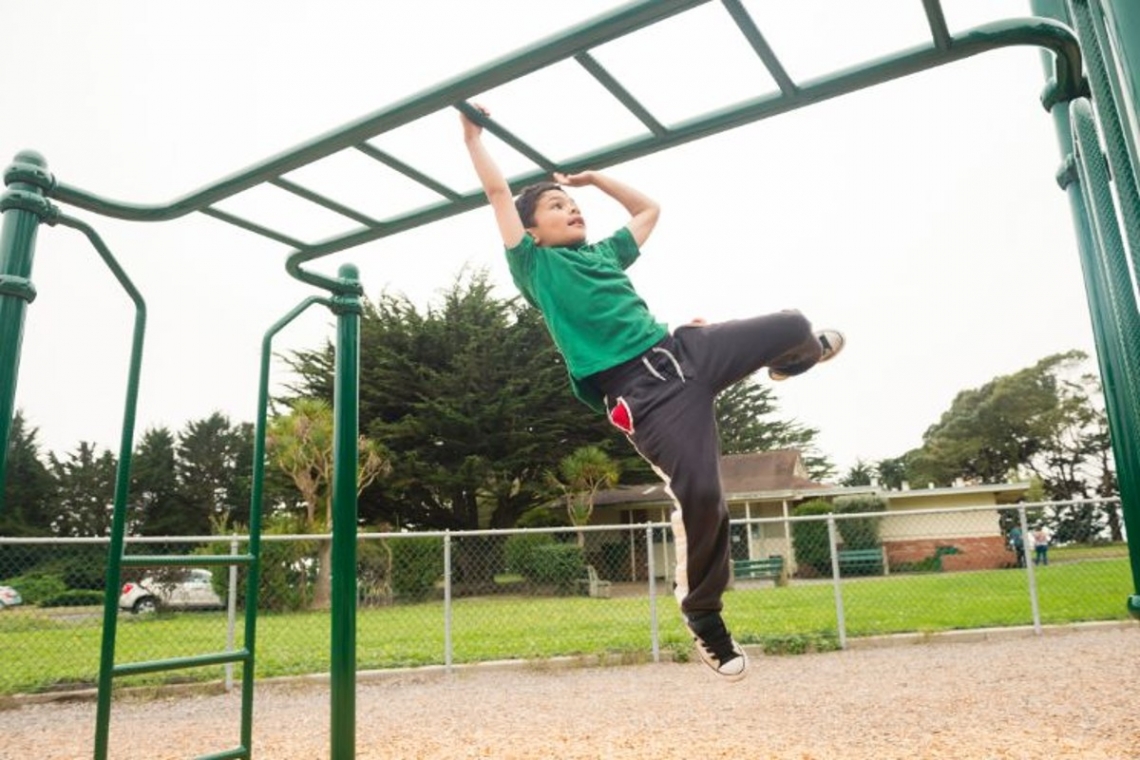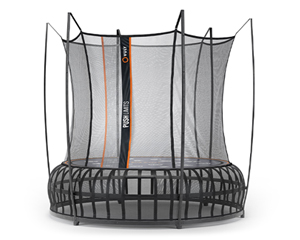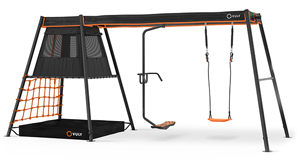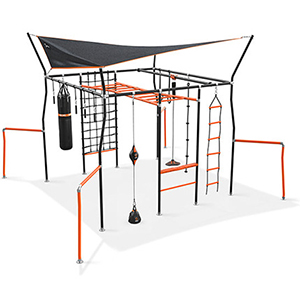
Monkey bar spacing refers to the distance between each bar or rung on a set of monkey bars or jungle gym. The space between the bars directly affects the difficulty level of the monkey bars for children. If the bars are too far apart, it can be challenging for children to reach the next bar. If the bars are too close together, the equipment can become awkward to use.
Factors Influencing Monkey Bar Spacing
The standard monkey bar spacing plays a significant role in making playgrounds age-appropriate, safe, and enjoyable for children. The general guideline for monkey bar rung spacing lies between 9 to 12 inches, suitable for most school-age children. However, the spacing can be adjusted based on factors such as:
-
Age Group
The age of the children who will use the monkey bars influences the ideal spacing between rungs. The rules from the Public Playground Safety Handbook say that monkey bars should be parallel and evenly spaced, with a space larger than 9 inches between each one to keep kids safe. For playgrounds meant for adults, the spacing tends to be even larger to account for larger limb length and to provide a greater challenge. Adjusting the distance according to age ensures that the bars are appropriately challenging, fun, and, most importantly, safe for each age group.
-
Difficulty Level
The further the bars are apart, the more challenging it becomes. At 9 inches apart, younger children can easily reach from one bar to the next. This makes the monkey bars less challenging to use, as it requires less upper-body strength and coordination.
On the other hand, increasing the distance between bars to around 18 inches makes it more difficult. This wider spacing necessitates greater upper body strength, coordination, and reach. Older and more athletic children typically enjoy the challenge of larger spacing.
-
Safety Standards
The U.S. Consumer Product Safety Commission's (CPSC) Public Playground Safety Handbook says that the distance between monkey bars should generally be between 9 to 12 inches. These measurements strike a balance between safety, challenge, and attainability. They cater to a variety of age ranges, typically children between the ages of 5 and 12.
There may be variations depending on specific requirements, design principles, or considerations for special needs. However, regardless of the exact measurements employed, the underlying principles should always prioritize the safety of children.
It’s important to know that standard monkey bar spacing represents just one aspect of creating safe and engaging playground equipment. Other factors—like the height of the monkey bars, the durability of materials used, and the surface beneath the equipment—also significantly contribute to the overall safety and effectiveness of playground equipment.

Monkey Bar Rung Spacing for Different Age Groups
The principle of monkey bar spacing is not a one-size-fits-all concept. Children of different age groups have varying abilities and arm spans, which should be considered when determining the appropriate monkey bar spacing.
In accordance with the CPSC’s Public Playground Safety Handbook, playgrounds intended for toddlers and 3-year-olds should not include monkey bars or horizontal overhead ladders.
Preschool-Aged Children (4 to 5 Years Old)
For playground equipment designed for preschool-aged children, monkey bars should feature rungs that are parallel and uniformly spaced. The spacing between rungs should not exceed 12 inches. This measurement provides an appropriate distance for the average preschooler to comfortably and safely reach between rungs.
School-Aged Children (6 to 12 Years Old)
For school-aged children, the spacing between the rungs should be no more than 15 inches. This larger distance takes into account the longer reach of older children yet still remains within a range that promotes safety and ease of use.
In all cases, the space between adjacent rungs should be greater than 9 inches to prevent children from becoming trapped when playing.
Additionally, it's important to consider the distance to the first handhold from the access point. If access is from a platform, this horizontal distance should not exceed 10 inches and should not be directly above the platform. If access is from climbing rungs, the first handhold should be at least 8 inches but no greater than 10 inches away.
Adolescence (12+ Years)
As children enter adolescence, their physical strength, dexterity, and arm span increase considerably. They become capable of taking on more significant challenges, which can be facilitated by increasing the spacing between monkey bar rungs. While there is no standard measurement, ideally for adolescents, monkey bar rung spacing should range from 12 to 18 inches.
Understanding the importance of age-appropriate spacing for monkey bars is essential when creating playgrounds that are enjoyable, safe, and suitable for all children.






















































